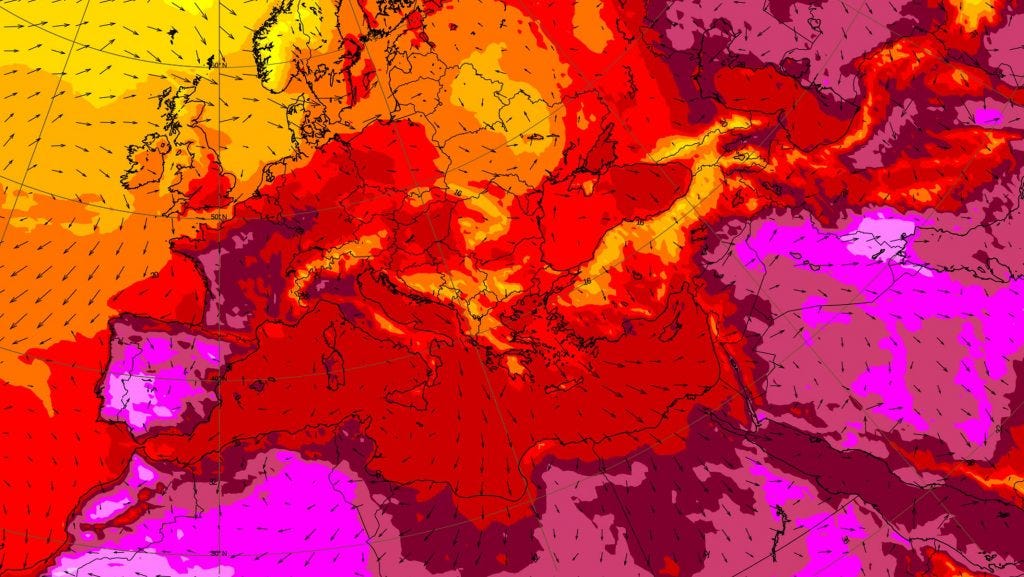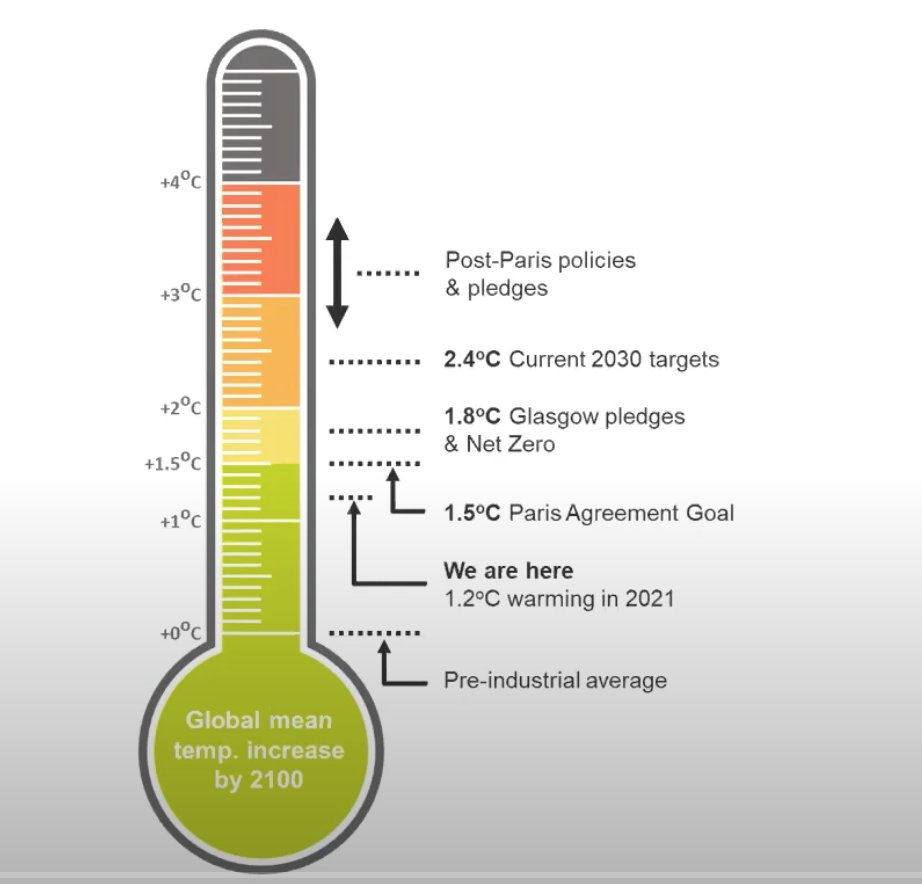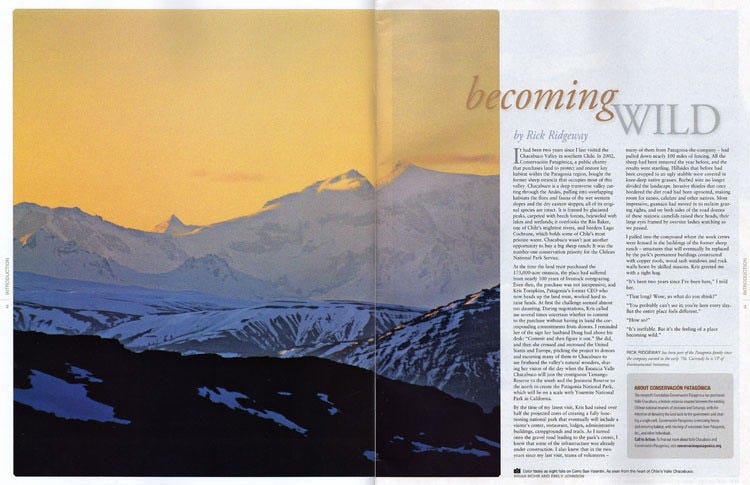Driving heat reflections ...
Reflections from driving on what will be the coolest 11 July for years, if not decades to come.
Welcome to Regen/ Notes
Regen Notes is the newsletter of regenerative gleanings, news, stories and more, with a sideways focus on the built environment, connecting spaces between dots, sharing ideas, themes and individuals that invigorate and inspire …
Even though it was the hottest of the year so far, it may well be the coolest 11th of July for years and decades into the future.
On the hottest day of the year so far, I had reason to do something I had not done for a good while, in fact since before Covid, to drive a fair distance on business-related activities. Like many other drivers I had air-conditioning cranked up, but unlike many grateful for having an EV particularly given current high fuel costs.
Driving long distances gives that time for reflection and thinking. Like musing on the potential from an EV, which in current hot temperatures and a warm battery gave improved capacity and improved efficiency of miles per kwhr. OK its not perfect, given the battery sourcing issues, and energy to charge the battery has to come from somewhere, in this case, a mix of renewables and unknown from public chargers.
Yet for the numbers: a full charge of 323 miles on a 300-mile battery, and a 4.9 miles/kWh driving performance rather than the normal 4.2 even with AC - on whereas all ICE vehicles using air-conditioning means more fossil fuel consumption, which leads to worsening the climate crisis we are in.
Driving also gives time to reflect on the slogans seen on trucks with odd mixed messages, for example, moving more to reduce CO2, ok, moving more at a time in bigger trucks is logical and does reduce the travel CO2 for each unit of stuff moved, but the real message here is to buy more and more, and hey somehow you can feel good in saving the planet. Or the cement truck with the slogan of Building A Better Future, masking the fact that concrete and cement is the one of the most widely used material in the world and alone contributes to 8% of all carbon emissions. It is an odd equation that cement, even low carbon varieties, can make the future better, especially on a day with temperatures hitting the mid-30s.
Somehow we have lost the connection between what we do and the consequences, for good or bad, even when brought into stark reality as the climate crisis pushes temperatures ever higher.

Here in 2022, in the UK, meteorologists are warning that people should prepare for a “historic, even unprecedented” season of high temperatures with the Met Office issuing ‘amber warnings for extreme heat ‘for population-wide adverse health effects likely to be experienced, not limited to those most vulnerable to extreme heat, leading to potentially serious illness or damage to life” with forecasters noting models predicted maximum temperatures in excess of 40C in parts of the UK over the weekend and beyond.
And we are only at 1.2deg warming.
On that same day MPs received a Climate Briefing from @uksciencechief Sir Patrick Vallance, and other scientists, reinforcing urgency and why now is such an important period. (Worth watching the video mentioned in the twitter thread from Eliz Mizon)


Of course, rarely do we see the back of a truck or billboard slogan equivalent of “don’t buy this jacket” a la Patagonia. Don’t drive. Don’t use air-conditioning, Don’t buy more stuff, Don’t use cement ... where for all of these ‘don’t’s’ there are good alternatives with positive benefits rather than degenerative impacts.
Surfing Big Waves of Regeneration
This brings me to the recent brilliant conversation with Patagonia founder Yvon Chouinard and John Eklington. Here we have two influential thought leaders taking business sustainability way beyond business as usual. This is a must read on Topia
and thoughts on that word sustainability
Yvon: Well, yeah, regeneration has kind of replaced sustainability – that’s a word I really hate. Nobody knows what it means!
It was 10 years ago or more since I shared my thoughts on how Patagonia had influenced my thinking from the eighties, in my outdoor climbing, travel and adventure life, and whilst in project management at that time, in the realisation, there is a better way of doing things, and how now Patagonia’ approach is in many ways a lighthouse for regenerative business.
I had encountered Patagonia as a geographical area way before the company, through the writings of Bruce Chatman’s On Patagonia, (which I rank as one of the best travel writings) of accounts and stories of mountaineering in the Patagonia region particularly on Cerro Torre. It was then and still is a bucket list area to visit (if low-impact travel such as sailing ever presents itself as an option). But it was the Patagonia catalogues, a heady mixture of stunning photography, inspired writing, and of course products, using their influence to inform and save the planet through their business of outdoor clothing.
“A word about a word we have chosen to use as little as possible: Sustainability. Its a legitimate term that calls us not to take more from nature than we can give back. But we do take more than we give, we do harm nature more than we help it. We have no business applying the the word sustainable to business activity until we learn to house, feed, clothe and entertain ourselves – and fuel the effort – without interfering with natures capacity to regenerate itself and support a rich variety of life. We are a long long way from doing business … and no human economic activity is yet sustainable”
Those two blogs that wrapped up my thinking at that time are reproduced here on substack.
There are two expressions from the work and talks from Yvon Chouinard over the years, that have in many ways have shaped my journey :
‘Every time we do the right thing for the environment we have made money.
‘We should not use the word sustainability until we give back more than we take’.
Indeed, these two soundbites illustrate that being regenerative, going beyond sustainability or however we like to phrase it, is not always to the detriment of business, but can mean the opposite when focusing on potential not problem.
The second illustrates how intrinsically, as humans and in business, we are connected to the natural environment, to non-humans, communities, those we work with and those who work for us.
Reciprocity. Vital. Echoing words from Robin Wall Kimmerer and the Pottawatomi indigenous peoples’ honourable harvest “to take only what is needed and use everything taken ”. Bringing us back into balance with the earth.






